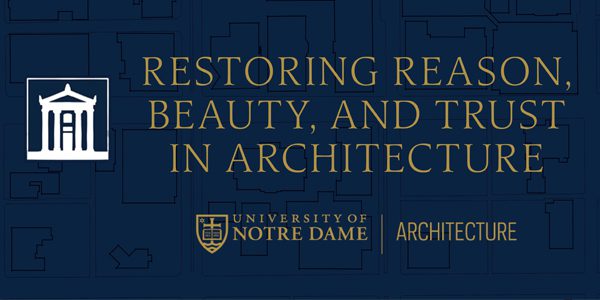An Irish Christmas at Kylemore: Spinning Yarns: Fairy Tales, Textile Art, and Story Structure
Subscribe to the ThinkND podcast on Apple, Spotify, or Google.
Featured Speakers:
- Betsy Cornwell, Author
- Lisa Caulfield, Director of the Notre Dame Global Center at Kylemore Abbey, University of Notre Dame
The second session in the Irish Christmas at Kylemore Abbey series featured Betsy Cornwell, an accomplished writer and novelist who has published five novels, as well as various essays and articles on literature and other topics. Lisa Caulfied, the Director of the Notre Dame Global Center at Kylemore Abbey, moderated the event. Their discussion centered around the work that Cornwell has done both as a writer and as a textile artist. Her passion for recreating the classic, yet timeless works that she has adored throughout her life shone through at every point. As an artist, she sees value in the old and beauty in the process of pouring her adoration and frustration into transforming it.
Cornwell began her presentation by highlighting her lifelong love for books and reading. As a young girl, she read fairy tales and classic stories, learning many life lessons from them. But, as she grew, began to find frustration in the fact that they seemed to require only one ending. Her talent in descriptive writing led her to dedicate her talents to recreating fairy tales and other classic works. Wanting to add something to the conversation on these stories, she questioned where they could be changed to fit a modern perspective. In her novel “Mechanica”, she focused on the story of Cinderella. Instead of being transformed by a fairy godmother and falling in love with a prince, her character Nicolette is a mechanic and an inventor who creates her own happily ever after. Throughout the novel, she combines the feminine concepts of fairy tales and textiles with the masculine concept of mechanics to craft a female heroine who is independent and in control of her story’s ending. Her motivation for recreating these works stemmed from her childhood spent reading fairy tales and her desire to write the stories that she would’ve enjoyed as a young girl. Throughout her presentation, she emphasized the importance of opening the dialogue of older stories and questioning their story structures, illustrating the fact that their popularity does not establish their perfection. She has also rewritten the stories of Robin Hood, Snow White and Jane Eyre.
Cornwell then moved on to discuss her work as a textile artist. Though they do not at first seem related, she described the similarity between writing and creating textile art as both being repetitive, physical actions that result in the creation of an intricate product. She views garments and yarn in the same way that she views the story structures of the classic works she recreates: as valuable pieces that deserve to be transformed and given a new purpose. Her latest project has been renovating an old knitting school and factory to make not only a home for her and her son, but a future art retreat for other single moms. The art that Cornwell creates displays a dedication to seeing the beauty and potential in what has stood the test of time, a value that runs deep in the core of both her work and her life. To conclude her presentation, Cornwell posed a rhetorical question to the participants: What are the stories that have been compelling for you and how might you add to them?
- Classic stories and fairy tales teach and shape us. We must either fit our lives to them or push back against them. (8:44)
- Fairy tales don’t have to communicate conformity to one happily ever after, the dialogue can be expanded to encourage us to seek the ending that we choose. (10:06)
- We all have different viewpoints on a story, displaying how complex and multi-layered they can be, offering different meanings to each reader. (15:52)
- Recreating and adding to the conversation can not only be done with a story, but also with a garment or yarn. (16:54)
- Classic stories are important to the rhythm of human life because they reflect the human experience that we all share. (18:55)
- “I took a class called Fairy Tales and Gender which helped me to start thinking in an active way about what these stories had told me as a woman and how I might actually have been shaped by them and how I might either fit my life to them or push back against them.” (Betsy Cornwell, 8:44)
- “I felt that fairy tales were telling me that there was only one version of a happily ever after.” (Betsy Cornwell, 10:06)
- “I started thinking about story structure as a machine and if I could have a Cinderella who worked with machines, who was a mechanic and an inventor, and could create her own happy ending by building her own mechanical horse and carriage and also metaphorically could reach inside of the Cinderella story structure and rebuild it in a way that suited her.” (Betsy Cornwell, 10:34)
- “I’m really interested in ideas of mending and renewal and re-working and adding to the conversation of an object, whether that’s a story or a garment or yarn.” (Betsy Cornwell, 16:54)
- “It’s about looking at something and respecting the fact that it has stood the test of time and thinking about how I can engage with this wonderful thing and how can I add to this conversation.” (Betsy Cornwell, 17:08)
- “Through telling stories we are talking about and making explicit the inner rhythms of our own lives.” (Betsy Cornwell, 18:55)
- “These are forms (fabrics, fairy tales) that are traditionally dismissed and yet are completely crucial to our lives.” (Betsy Cornwell, 30:16)
Related Content
How Cities Speak To Us
Professor Emily Talen joins the School of Architecture to share her work at The Urbanism Lab and its focal point at the University of Chicago for the study of the built...
View EventThe Black National Anthem & Parent’s Signing Off On Children Reading Black Books
In this week’s episode, Isaiah and Tykiera talk about some tweets about Black people that took Twitter by storm. They also talk about The Black National Anthem, Lift Every Voice...
watch videoTrusted AI Needs Trusted Data
In the buzz around AI, let’s not ignore the role of data for developing AI we can trust, says one Notre Dame computational scientist. Two years ago, Notre Dame launched the...
Read Article


